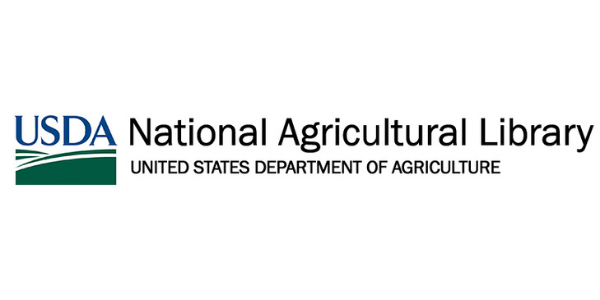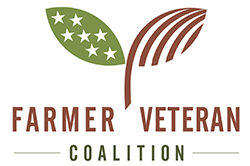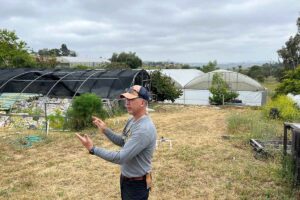Thank you for keeping FVC national staff and our Texas chapter members in your prayers this past month. While the panhandle region of Texas was on fire, other sections of the state were flooding. Tonight, as I write this note to you we are again under a flood watch.
Natural disasters can create life-threatening situations for many of us who live in rural areas because our communities are vulnerable due to limited resources, inadequate infrastructure, and capacity constraints such as equipment shortages. These limitations can make it challenging to prepare for, respond to, and recover from emergencies and disasters.
Preparation is always key to staying safe during any emergency. This year the Farmer Veteran Coalition has partnered with the Native American Financial Services to conduct outreach and education for USDA NIFA (National Institute of Food and Agriculture) on risk management in three of the regions for ERME (Extension Risk Management Education).
As you may be aware, there are five general types of risks in agriculture: production risk, price or market risk, financial risk, legal risk, and human risk. Emergencies, disasters, and hazards affect all of these risks, but most particularly production risk.
Protecting your farm involves a number of considerations: family members, employees, buildings, equipment, livestock, and crops. Planning ahead for all situations can help to minimize the impact and speed up the recovery process for you and your farm.
Preparedness
Please read your newsletters and check in on social media for information on coming podcasts, webinars, and workshops on how to take the next step to begin or to improve your farm emergency preparedness plan. Until then, start to gather information and think about the following:
- What disaster or hazards are in your community? For your farm?
- How would you be warned? Have you signed up for local alerts on your phone or email?
- How should you prepare for each disaster or hazard?
- Put together an emergency supply kit for your family.
- Draw a farm site map and indicate the following:
- building and structures
- access routes (roads and lanes)
- barriers (fences and gates)
- location of livestock
- location of hazardous substances
- electrical shutoff locations
- Make a list of your farm inventory, including:
- livestock (species and number of animals)
- crops (acres and types)
- machinery and equipment (make and model number)
- hazardous substances (e.g.. crop protection tools, fuels, medicines, and other chemicals)
- Start a list of emergency phone numbers
- local and state veterinarian, ag commissioner.
- county extension service
- local emergency management
- insurance agent
- Make a list of suppliers or businesses providing services to your farm:
- livestock or milk transport, feed delivery, fuel delivery, etc.
- Contact your insurance agent to review your insurance coverage. Consider getting additional coverage for all hazards situations and crop insurance.
- Stockpile supplies needed to protect the farm:
- sandbags and plastic sheeting in case of flood
- wire and rope to secure objects
- lumber and plywood to protect windows
- extra fuel for tractors and vehicles
- hand tools for preparation and recovery
- fire extinguishers for all barns and all vehicles
- safe supply of food to feed livestock
- generator
- Identify areas to relocate your assets if needed and neighbors to help.
- Prepare your families and your farm employees. Having a plan relieves everyone’s stress.
We all know that we should have emergency preparedness kits, but when we need them are they ready to grab? The above brief list seems like common sense, but many farms and ranches lack even the basic preparations.
Rural communities may face barriers as they prepare for, respond to, and recover from emergencies and they should collaborate with partners to identify potential barriers and to develop plans and approaches for addressing them.
Rural areas may not have adequate systems in place to communicate with first responders, emergency managers, and the public in a timely and efficient manner during an emergency. This includes public warning systems and communication channels that cannot reach all residents.
Many rural areas also have limited or spotty service coverage for internet and cell phones. During power outages, power is typically restored first in areas that are more densely populated — thus we must all lean on each other during these challenging times.
Navigating tribal, local, state, and federal agencies to effectively cooperate and coordinate a response can be challenging. The general framework of the Emergency Management System is that local governments and tribal communities are mostly responsible for their own safety, including their own first responders, police, and fire departments. Communities are expected to exhaust local resources first, then state resources, in that order.
It is my hope that our chapters will have a point person to become a subject-matter expert on emergencies mitigation, preparedness, response, and recovery to assist other Farmer Veterans through disasters and recovery. Many of our Veterans had these responsibilities when they were in service and would be natural to assume these roles in their communities.
Resources
Some resources we have been using lately that I wanted to share:

The Section 504 Home Repair Loans & Grants in Presidentially Declared Disasters pilot program provides loans and grants to very low-income homeowners to repair disaster related damage caused to their homes.
To qualify, you must:
- Have disaster related damage to your home cause by a presidentially declared disaster on or after July 18, 2022.
- Be the homeowner and be able to occupy the house within 12 months.
Utilizing the USDA Eligibility Site you can enter a specific address for determination or just search the map to review general eligible areas. Loans and grants may be used to repair disaster-related damages caused by a Presidentially Declared Disaster on or after July 18, 2022. Cost incurred prior to the application may be eligible if the purpose of the expense was to repair disaster-related damage.

A deeper dive for those who may wish to lead their chapter or community members in times of emergencies, disasters, or hazards:
https://www.ruralhealthinfo.org/toolkits/emergency-preparedness/about-this-toolkit

Disaster planning with animals:
https://www.nal.usda.gov/animal-health-and-welfare/disaster-planning-animals
Wishing you all a meaningful Memorial Day weekend. May the courage of those departed inspire us all to live with purpose and gratitude.
Sincerely,
Jeanette






